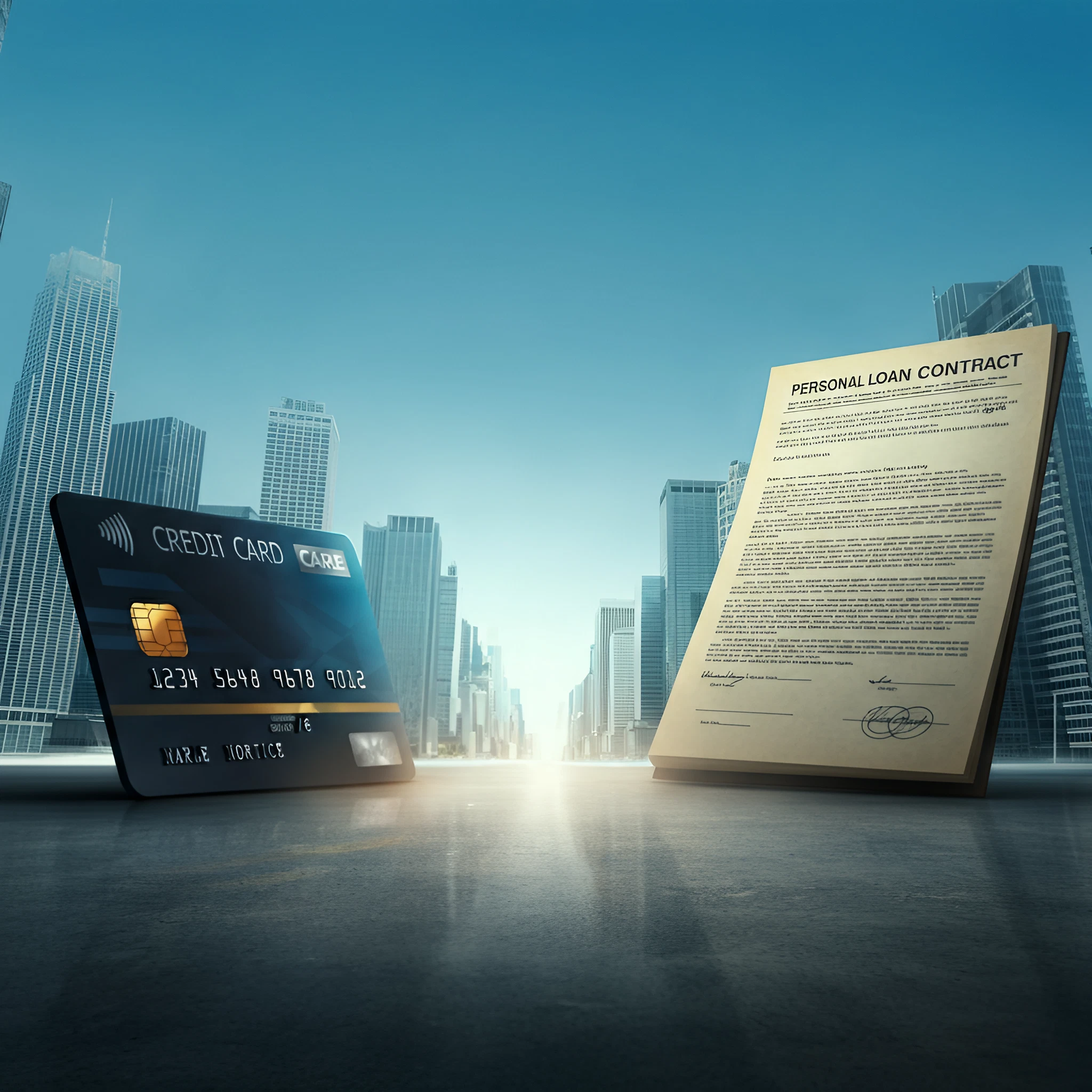If you’re considering borrowing money, you’ve likely come across two popular options to meet your financial needs: credit cards and personal loans. Both can provide quick access to funds, but they serve very different purposes. Understanding the pros and cons of a credit card vs personal loan is key to making an informed decision that aligns with your financial goals.
This guide will break down the differences, benefits, and potential downsides of both options, helping you determine which one is right for you.
What Is a Personal Loan?
A personal loan provides a lump sum of money that you repay over time, usually in fixed monthly payments and with a set interest rate. It’s considered an “installment loan,” meaning you agree to pay it off within a specific loan term (typically ranging from 1 to 7 years). These are often unsecured loans, meaning they don’t require collateral, but secured options also exist.
Key Features of Personal Loans:
- Fixed interest rates (in most cases) ensure predictable monthly payments.
- Must be repaid over a specified term.
- Typically used for large purchases, debt consolidation, or financial emergencies.
- Often charges additional fees, such as origination or prepayment fees.
Pros of Personal Loans:
- Lower interest rates compared to credit cards (especially for those with good credit).
- Fixed monthly payments make budgeting easier.
- Suitable for consolidating debt or financing larger expenses.
Cons of Personal Loans:
- No ongoing access to credit after the loan is disbursed.
- May include high fees, such as origination or late payment fees.
- Not ideal for small, recurring purchases.
What Is a Credit Card?
A credit card provides revolving credit, meaning you can continuously borrow up to a set credit limit as long as you repay what you owe. Instead of receiving a lump sum, you make charges as needed, allowing for flexibility. Credit cards typically include a minimum payment requirement and charge interest on unpaid balances.
Key Features of Credit Cards:
- Revolving credit allows for ongoing use up to your credit limit.
- Interest on purchases is avoided if you pay your full balance each month.
- Can include rewards programs (cash back, travel points, etc.).
Pros of Credit Cards:
- Convenient for everyday purchases and emergencies.
- Pay interest only on the amount of credit used.
- Offers perks like rewards points, 0% introductory APRs, and cash-back bonuses.
Cons of Credit Cards:
- Typically higher interest rates compared to personal loans.
- Carrying a balance can lead to revolving debt and costly interest charges.
- Can encourage overspending due to easy access to funds.
Comparing Credit Card vs Personal Loan
Here’s a side-by-side comparison to help clarify the differences:
| Feature | Personal Loans | Credit Cards |
|---|---|---|
| Repayment Structure | Fixed monthly payments over a set term | Flexible; pay balance in full or a minimum amount |
| Interest Rates | Lower, fixed rates (generally 6-20%) | Higher, variable rates (usually 15-25%) |
| Access to Funds | One-time lump sum | Ongoing up to your credit limit |
| Best Uses | Large purchases, debt consolidation, financial emergencies | Everyday spending, small purchases, emergencies |
| Fees | Possible origination fees, late fees | Possible annual fees, late fees, and high interest on balances |
| Perks | None | Rewards, travel points, 0% intro APR offers |
When to Use a Personal Loan
A personal loan might be the better choice if:
- You’re consolidating debt: Personal loans offer lower interest rates, making it easier and cheaper to pay off high-interest debts like credit card balances.
- You’re financing a big-ticket purchase: Whether it’s home improvements, a wedding, or medical expenses, personal loans offer the stability of fixed payments and predictable terms.
- You want to avoid variable interest rates: Personal loans typically come with fixed rates, so your payments won’t fluctuate.
Example Scenario:
Imagine you have $10,000 of credit card debt at an average interest rate of 18%. By taking out a personal loan with a 10% interest rate and a 3-year term, you could save significant money on interest while paying off the debt faster.
When to Use a Credit Card
A credit card might be a better fit if:
- You’re making smaller, recurring purchases: Credit cards are ideal for everyday use, like groceries or online shopping.
- You can pay the balance in full every month: Avoid interest entirely by clearing your card balance by the due date.
- You want rewards or perks: Many credit cards offer competitive rewards programs, travel perks, and even cashback incentives.
Example Scenario:
If you need to cover a $500 car repair and can repay it in full next month, a credit card with no annual fee gives you flexibility without incurring interest.
Choosing the Right Option for You
When deciding between a credit card vs personal loan, consider:
- How much you need to borrow: For larger amounts, a personal loan is generally the better choice.
- How quickly you can repay: If you can pay off the balance within the credit card’s grace period, you’ll enjoy interest-free borrowing.
- Your financial habits: Structured payments work better for those who like predictability, while credit cards offer flexibility.
- Rewards or perks: If you travel frequently or spend heavily in certain categories, a credit card rewards program could make sense.
Final Thoughts
Both credit cards and personal loans have their advantages, but they serve different needs. The right choice depends on your financial situation, your borrowing habits, and how you plan to use the funds.
Still unsure which option works best for you? Explore your financial habits and options further to make informed decisions that align with your goals. Whatever you choose, ensure it’s a tool that helps you manage your finances effectively, not a source of undue stress.
Got questions or need help managing debt effectively? Share your thoughts or find additional resources in the links below.








